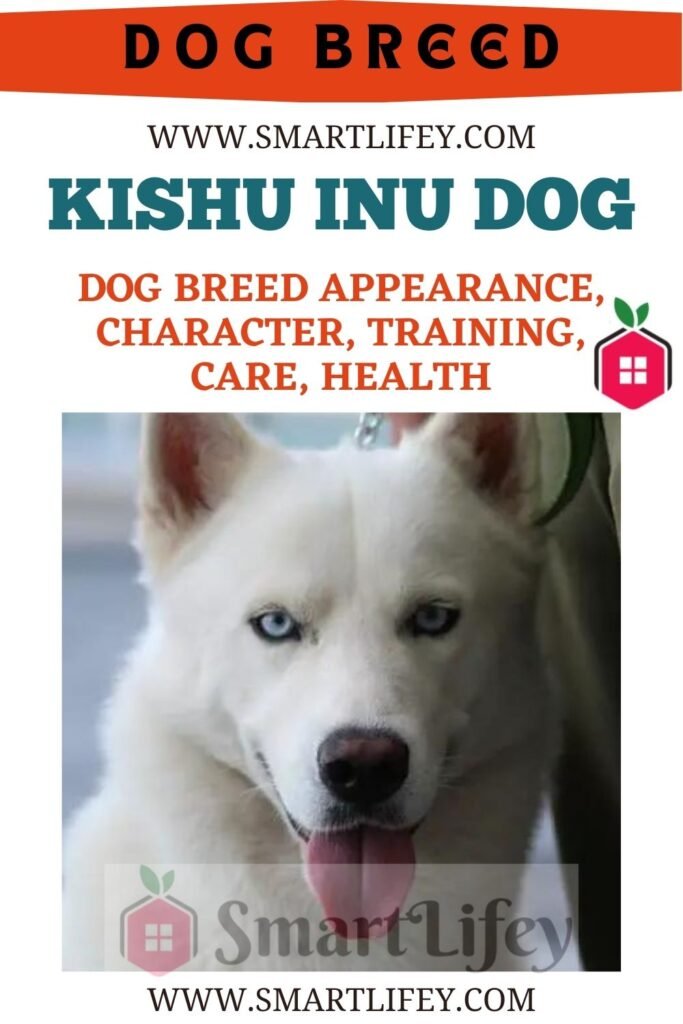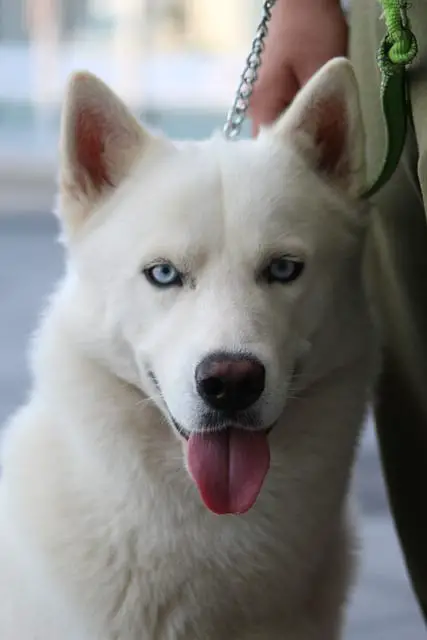
The Kishu Inu are considered Spitz dogs; This breed is characterized by its incredible appearance. They are Japanese dogs that are known to be very friendly, active and always on the go.
If you want to know more about the characteristics, personality and care of these impressive canines, do not stop reading this article.
Origin
One of the most relevant things about the Kishu dog, also known as Kishu Ken, is its historical trajectory, since they have already been in the Japanese archipelago for more than 3,000 years.
Even today, the true origin of these dogs is not known, although it is believed that, most likely, they come from those companion dogs of the Chinese nomads that populated Japan.
The name ” Kishu ” that this dog has, comes directly from the mountainous region of the same name, which is located within the Wakayama and Mie districts.
Since their discovery, these dogs have worked as hunters, standing out mainly in hunting wild boar and deer . In 1934 this breed of Japanese dog was declared a natural heritage, an honour that it shares with some other dog breeds.
Once this recognition was obtained, this breed became officially known as “Kishu Inu”. However, during World War II, the history of these dogs became dark, because during this conflict these Kishu dogs almost ceased to exist.
However, little by little it has been reestablishing itself and growing in number, although, in general, it does not usually leave Japan.
Characteristics of the Kishu Inu
They are medium-sized dogs, their weight is usually between 16 and 18 kilograms, and their height is between 46 and 55 centimeters. The ideal size of these canines is generally around 52 centimeters in males and 49 centimeters in females.
They have a proportionate body with well-developed musculature and a tail that can be curled on the back. The Kishu Inu is a broad-boned dog with a strong build and good solidity.
Their legs are usually muscular and robust, one of the characteristics that stands out the most about their bodies. The coat of these dogs is dense, which, as occurs in almost all Japanese breeds, is presented in a bilayer where the inner part is fine and smooth , while the upper part is long and thicker.
The fur, both internal and external, covers the entire body of the animal, although it can be noted that the hair on the tail and the sides of the muzzle, tends to always be longer than that of the rest of the body of the Kishu Ken .
The head of these dogs usually stands out on their body. It is wedge-shaped and the muzzle is long and tapers at the tip, until it reaches the nose, which is usually black (unless the dog has white fur).
The ears of the Kishu Inu are small, triangular in shape and their eyes are brown or honey, which tend to be very expressive and perfectly circular in shape.
Kishu Ken care
Kishu Inu are characterized by being very active dogs, so they must have constant physical activity, at least once a day.
The exercise should not only be physical, but also mental, this because they are very intelligent dogs and need daily stimulation. It is recommended that activities be carried out where the dog can keep his mind active, such as search games or mental agility.
They are dogs that have quite abundant and dense fur, so they are always well sheltered from the cold. However, this is a problem for the heat, so you must be very careful in the summer months or if you live in areas with high temperatures.
If the dog is living in areas where the constant temperature is high, the ideal is to take it to a dog groomer where they know about the breed so that they can shape its coat that helps it tolerate temperatures.
This type of coat must be brushed at least once a day , in this way loose hairs, dirt and possible knots are eliminated. This way, the dog’s hair will always remain healthy, shiny and they will not have problems with the skin.
The diet of the Kishu Inu must be balanced and of good quality. These dogs tolerate well being fed a diet based on feed or homemade food. You just have to make sure that it meets the nutritional requirements it needs. Natural feed is the best for this breed.
Education
The education of the Kishu Inu should start from an early age, as it will be necessary to create rules to live with the dog in a harmonious and effective way. As we always recommend, early socialization is a key element for the coexistence of dogs with others.
It is also very important that from a young age they are educated to meet their needs on the street and not at home. They should be offered a comfortable bed where they can rest at ease and an area at home where they can relax and feel safe and loved.
Training a Kishu Inu is not difficult, as they are quite docile dogs and tend to obey without problems.
However, they can also become stubborn, which can make training a bit difficult, although this is not a common occurrence.
Character of the Kishu Inu
This is a breed of dog recognized for being active, very lively and always being alert to its surroundings. These characteristics have made it be considered an excellent but for hunting. Another job they are very good at is guarding dogs, as they are distrustful of strangers, so they do an excellent job of grooming.
Although they are very active dogs, they are not restless, in fact they are quite relaxed, they only need daily exercise and constant movement. Their curiosity is high, so they love to go exploring and discovering new things, although you will never see them lower their guard or get into trouble.
The Kishu Inu are capable of adapting to any type of environment in which they are placed, however, they are not good with solitude, so they must always feel that they are accompanied.
With its family this breed is very playful, sweet, docile and always shows fidelity and protection. With strangers, on the contrary, they are shy and distrustful, even if they feel that this stranger is a danger to him or his family, he will not hesitate to be aggressive to protect his loved ones.
Diseases and Health
They are dogs that are characterized by being very healthy; According to experts, this is because they are a breed that has a long history under its belt. This means that, as they have had to evolve so much, their health is much more optimal than that of other dogs.
The most common diseases that Kishu Inu can present are:
- Hip dysplasia.
- Patella luxation.
- Digestive problems (eg gastric torsion).
In some cases, congenital problems may occur that affect the animal, among these we have progressive retinal atrophy and hypothyroidism . Although this is very rare.
Their healthy state is usually always present until the dog reaches its old age, where they begin to show signs of advanced age.
As we have said on other occasions, periodic checkups and visits to the vet are always recommended, as well as keeping the vaccination and deworming up to date.
10 curiosities of the Kishu Inu

- They are ancient dogs, it is estimated that their history dates back more than 3,000 years.
- During World War II, the Kishu Inu were on the verge of extinction, however, today, the breed has already been recovering. Although it is only still widely known, it is in Japan.
- In general, the eyes and nose of these dogs are black, however, depigmentation is accepted when the dog has white or albino fur.
- Male specimens are usually 3 centimeters larger than females.
- The accepted colors for this breed are red, white and sesame. Although previously those that had spots of a color different from that of the base were accepted.
- They are wary of strangers, so it will be necessary to teach them to socialize from puppies.
- They are lively, curious, affectionate and game-loving dogs, making them ideal for living with children.
- Although they can be a bit stubborn at times, these dogs are very intelligent and obedient, so training and educating them is not too complex a challenge.
- They are excellent hunters by nature, since in ancient times this breed was used as a hunter for deer and wild boar.
- They are very healthy dogs, so there will not be many worries, as long as they are given the necessary care. Although sometimes, the dog may have congenital problems, which are not very common.
